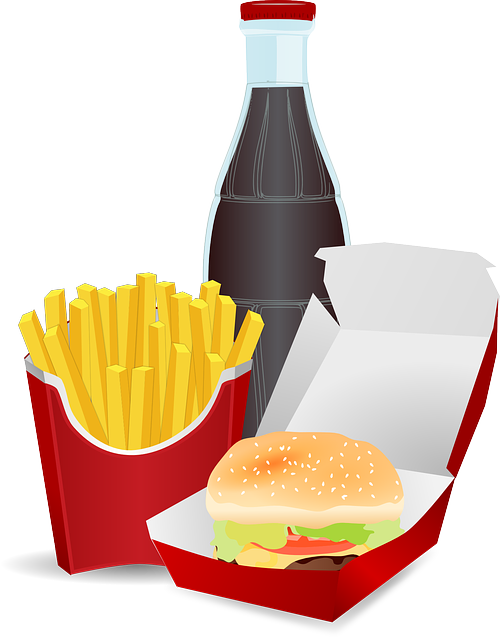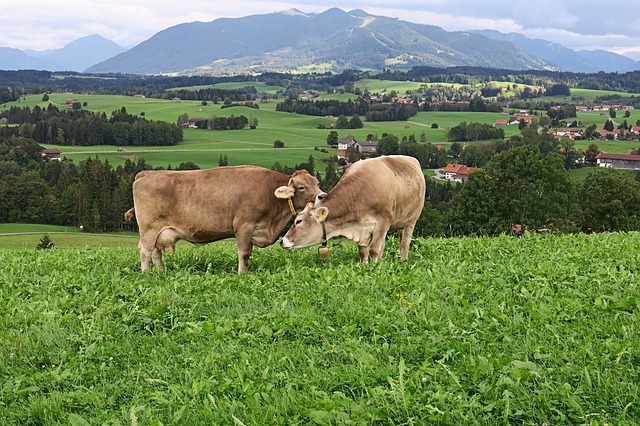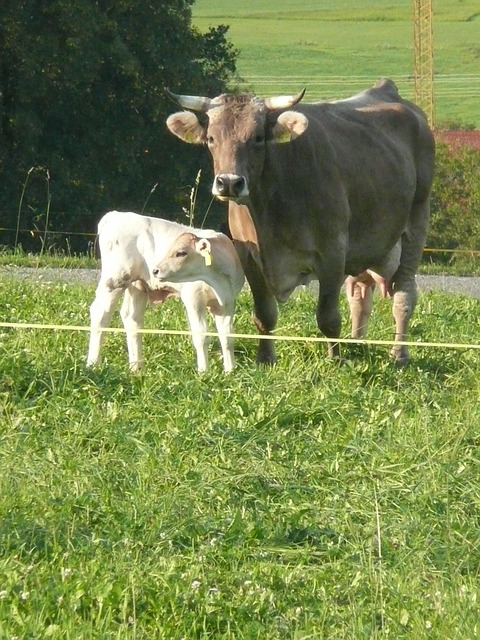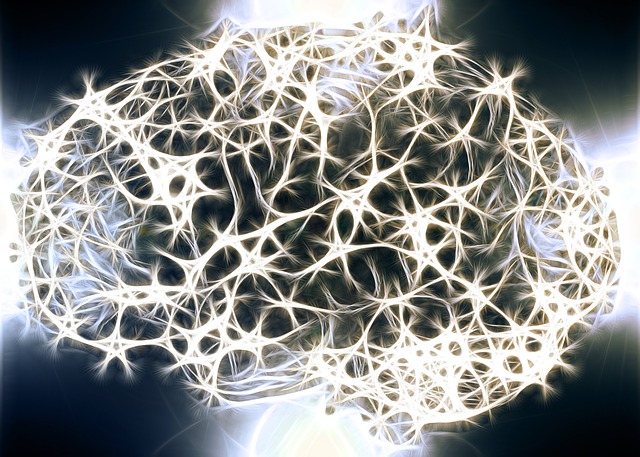Nutrient dense foods: Weston A. Price, indigenous diets, fat-soluble activators, Activator X, fertile soil, and a balanced diet.
Nutrient dense foods are just that - foods that will contain more nutrients than the regular fare that most people consume these days.
I think most of us are aware of how much protein, fat, and carbs a particular food will contain.
However, are you aware of how many minerals, vitamins, and fat soluble activators are in the foods that you consume?

The foods that contain these body-building nutrients "whether you believe it or not" begins with fertile soil for plant and animal foods.
Nutrient dense foods can only come from soils rich in minerals - most notably phosphorus and calcium.
Not surprisingly, your body also needs a certain amount of these minerals each day to stay strong.
Did you know you will need the fat-soluble activators in order to utilize these body-building minerals?
So....what does a balanced and nutrient dense diet actually look like? To give you a clearer picture, I think it's important to start with a huge discovery that happened about a hundred years ago.

This very important discovery explains why Native American Indians of the past had superior physical development and health.
That was as long as they followed their native or indigenous diet that contained nutrient dense foods.
Weston A. Price: he made very important discoveries and declarations about health.
About a hundred years ago, Weston A. Price a respected dentist and researcher traveled the world in search of indigenous diets and the secret to good health.
He intentionally sought out isolated "primitive" peoples that were still consuming their native foods who were free of the degeneration Dr. Price saw in his practice.
He was able to locate and study 14 indigenous diets which all provided almost complete immunity to tooth decay and also resistance to disease.
Dr. Price did this in order to find or note - what they have that we do not have.
Weston A. Price documented his vast travels and eye-opening research which happens to include hundreds of photos in his book, Nutrition and Physical Degeneration.
Let this be a Big Warning!
Price stated, "We do not realize how much modern human beings are being handicapped and injured since they first learned how to modify nature's foods."



In proportion, as modern man has modified nature's foods, he has degenerated!!
He brings up that wild animals used nature's foods as nature made them and this was also true of the earlier races of mankind.
Not surprisingly, Dr. Price mentioned he did not find any group that ate only plant foods that were able to build and maintain good bodies.
He said that a number of groups were endeavoring to do so with marked evidence of failure.
Weston A. Price's research proved conclusively that dental decay is caused primarily by nutritional deficiencies and those conditions that promote tooth decay also promoted disease.
BTW, Dr. Price had integrity and refused all requests to ally himself with any commercial products.
When you understand what he discovered, you may also want to turn away from the modern-day supermarket shelves and return to the whole nutrient dense foods of our forebears.
Indigenous diets: the 14 indigenous diets studied by Weston A. Price were diverse.
The 14 indigenous diets that Weston A. Price studied while traveling to 14 different countries were all very different and diverse.
In spite of their differences, they were all consuming nutrient dense foods that protected their health from degeneration.
Dr. Price observed perfect dental arches, minimal tooth decay, and overall excellent health in those groups of people who ate their indigenous foods.
Weston A. Price found that indigenous diets focused on one or more of these nutrient dense foods: foods from the sea, fresh water foods, wild game, domesticated animals, insects, land birds, eggs from wild or domesticated birds, and quality dairy products.


Some of the indigenous diets hardly contained any plant foods while others contained a variety such as native fruits, in-season vegetables, marine plants, wild plants, seeds, and whole grains.
And some of the indigenous diets included mostly cooked foods while in some of the others - many of the foods including animal foods were eaten raw.
The indigenous healthy diets Dr. Price studied didn't contain.........
None of the indigenous diets he studied contained any refined or devitalized foods such as white flour, polished rice, white sugar, canned foods, skimmed milk, pasteurized milk, jams, candy, hydrogenated fats, or vegetable oils.
Price termed these as the "displacing foods of modern commerce" which proved to be disastrous for anyone who adopted these modernized foods.
The nutrient dense foods and nutrients these healthy diets all had in common............

Young grass in the stage of rapid growth carries large quantities of minerals and digestible protein.
All of the indigenous diets Price studied contained some type of quality animal protein and animal fat from animals consuming a diet naturally found in nature.
Even though the indigenous diets studied were slightly different, they were very similar when reduced to mineral and vitamin content.
Price analyzed these diets in a lab and found they all contained at least 4
times the quantity of minerals and water soluble vitamins of the American diet of his day.
What was even more alarming was Price's discovery that these diets contained at least TEN times the amount of fat-soluble vitamins that's found in "conventionally produced" animal fats.
Dr. Price considered the fat-soluble vitamins to be the key component for a healthy diet and body.
Fat-soluble activators: assimilation of all other nutrients in foods depends on.
Price called the fat-soluble vitamins the "activators" upon which the assimilation of all the other nutrients in your food (whether it be protein, minerals, or water soluble vitamins) depends on.
The fat-soluble activators include vitamin A, vitamin D, and the "Price Factor" or "Activator X", which he discovered.
Weston A. Price wrote..................
"It is possible to starve for minerals that are abundant in the foods eaten because they cannot be utilized without an adequate quantity of the fat-soluble activators."
In other words, without the fat soluble activators namely vitamins A, D, and Activator X, your efforts to consume the "correct" diet will be futile!
Nutrient dense foods that contain these important fat-soluble activators will primarily come from high quality seafood and high quality animal foods.

Nutrient dense foods that will provide important fat-soluble activators include: shellfish, fish eggs, salt or fresh water fish, and marine oils.

Egg with fat-soluble activators.
Nutrient dense foods with activators from grazing animals: tallows, lard, organ meats, dairy butterfat, and pastured eggs.
Be aware that most conventional meats and dairy products will lack in the fat-soluble activators because these animals are not consuming a largely grass based diet.
In fact, factory farmed cows eating cottonseed meal or soy won't have the "elusive" fat-soluble vitamin that Dr. Price discovered.
Be aware that low fat animal foods won't contain a high amount of fat-soluble activators either as these nutrients are found in fat.
Activator X: elusive activator, sacred foods, vitamin K2, synergy, and health benefits.
Activator X is the "elusive" fat-soluble activator that Weston A. Price discovered when he traveled the world in search of physically perfect peoples.
He was able to present evidence that this newly discovered fat-soluble activator played a fundamental role in the utilization of minerals.
And it appears that the absence of this "missing link" from our modern-day diets is partly responsible for the proliferation of dental caries and other degenerative diseases.
Sacred foods: the nutrient dense foods of indigenous peoples.

In the past, sacred foods were not optional like they are today for the majority of the people.
Is that why there are so many sick people these days?
Activator X an extremely powerful catalyst for mineral absorption is found in nutrient dense foods considered sacred by indigenous peoples.
These sacred foods are fish eggs, fish liver oils, bone marrow, raw dairy foods, and the organs/fats of animals.
Some of theses sacred foods contain all 3 of the fat-soluble activators!
Dr. Price found some of the highest concentrations of Activator X in the milk of several species, varying with the nutrition of the animal.
Activator X is synthesized by the mammary glands and this fat-soluble activator plays an important role in infant growth and in reproduction.
In many of the butter samples he tested, Activator X was only present when the animals were eating rapidly growing green grass.
In most regions, this occurred in the spring and early fall.
Other nutrient dense foods that contain Activator X are Australian emu oil, eel, and egg yolks.
Vitamin K2 is Activator X: how to acquire this very "elusive" nutrient.
Presently, researchers were finally able to name Activator X as vitamin K2 which is the animal form of vitamin K.
Therefore, Activator X will now be referred to as vitamin K2.
It appears that Dr. Price discovered the roles of vitamin K2 in human health more than 65 years before the vitamin K research community.
With the latest research into vitamin K, we can now understand more fully how to acquire this "elusive" vitamin.
How do grazing animals acquire vitamin K2?

Recently, it has been shown that the precursor to vitamin K2 found in rapidly
growing green grass is vitamin K1.
Vitamin K1 is a compound found in photosynthetic organisms like green plants.
Animals grazing on green grass will accumulate vitamin K2 in their tissues in direct proportion to the amount of vitamin K1 in their diet.
Recent investigations have indicated that the season, climate, growing location, and soil fertility all affect the natural variation in the vitamin K1 content.
How does seafood acquire vitamin K2?
The presence of vitamin K2 in seafood can be explained by the fact that small sea creatures consume algae and plankton which both contain vitamin K1.
And then the larger sea creatures will consume them.
Interestingly, Price found the best bone structure among the indigenous people that ate a lot of seafood.
How do humans acquire vitamin K2?
There are a few different ways that humans can acquire vitamin K2.
Although, you must be aware of the major forms of vitamin K2: Mk-4, Mk-7, and a few others.

The Mk-4 form is a very bio-available way to get your vitamin K2. This form can be acquired from consuming animal and seafood such as listed in the sacred foods section.
Grass fed raw milk is my favorite way to get this very powerful animal form of vitamin K2. I also consume nutrient dense foods like raw pastured eggs, raw grass fed cream, and raw grass fed butter on a regular basis.

The Mk-7 and other desirable forms of vitamin K2 are derived from a bacterial fermentation process which can be acquired by consuming foods like full-fat hard cheeses, natto, sauerkraut, kimchee, kefir, and yogurt.
Interestingly, the form of vitamin K2 that will be generated depends on the strain of bacteria present.
It appears the bacterial forms of vitamin K2 can also be produced by the beneficial bacteria that's in your gut.
Please note: dairy foods such as hard cheese will also contain the Mk-4 form of vitamin K2.
Just remember, the MK-4 form of vitamin K2 is not produced by bacteria, but instead is created in humans and in animals from the consumption of vitamin K1.


Lots of fat-soluble vitamins!

Homemade ice cream recipes that are made from nutrient dense foods like grass fed cream, grass fed milk, and pastured eggs will contain the MK-4 form of vitamin K2.
Nutrient dense ice cream that's made with nutritious ingredients is a fun way to consume this valuable nutrient.

Or would you prefer to munch on a good ole kale chip?
Your body can make the MK-4 form of vitamin K2 (with the help of a particular enzyme) by consuming plant foods high in vitamin K1.
However, just know vitamin K1 is much less easily absorbed from your diet than the already bio-available dietary MK-4 forms of vitamin K2 such as raw grass fed dairy, fish, etc.
Be aware that many drugs can interfere with either the effects or absorption of vitamin K and can increase the risk of a vitamin K2 deficiency.
These include antibiotics, aspirin, blood thinners, antacids, drugs for cancer, alcohol, fat blocking pills, and drugs for cholesterol - to name a few.
Synergy of activators: vitamin K2 works with vitamins A and D.
Vitamin K2 is a very powerful fat-soluble activator that acts in synergy with the other important fat-soluble activators - vitamins A and D.
Did you know that vitamins A and D will command cells in your body to make specific proteins?
However, it's vitamin K2 that will bring these proteins to life and activate them!
It appears vitamin K2 may directly or indirectly regulate hundreds of physiological and pathological processes.

Dr. Price found that vitamin K2 helps your body absorb and use essential minerals like phosphorus and calcium.
He knew that grass fed butter was a rich source of this vitamin, so he developed a concentrated butter oil and combined it with cod liver oil.
Cod liver oil is high in both vitamins A and D. Grass fed butter can be high in vitamin K2 and vitamin A.
Price discovered the combination of cod liver oil with the high in vitamin K2 concentrated butter oil was more effective than cod liver oil alone in treating his patients for dental caries and other signs of physical degeneration.
Rather recently, researchers have finally begun to understand that vitamin K2 is required for two crucial processes......
1. The delivery and deposition of calcium to the correct places in your body like your bones and teeth.
2. The removal of excess calcium from your soft tissues to prevent calcification in places like your arteries.
Until recently, most people have been under the impression that it was only vitamin D's job to control where calcium ended up in our bodies.
Most have also been under the impression that vitamin D is the most important fat-soluble activator and most are oblivious to the vital roles that vitamin A and vitamin K2 play in our bodies.
When in fact, it takes all 3 of these fat-soluble activators in nutrient dense foods (working synergistically together) to build you a strong body.
Sadly, vitamin K2 has been underrated and misunderstood until recently by both the public and scientific community.
It's now believed that humans are required to consume bio-available vitamin K2 in their diet to receive optimal health.
Be aware that Dr. Price warned it's better to get the fat-soluble activators from your nutrient dense foods to avoid depleting one or the other.
Taking high dosages of vitamin D can deplete both vitamin A and vitamin K2!
And taking blood thinners such as Warfarin will target vitamin K2 and enhance vitamin D toxicity.
Health benefits of vitamin K2..............
The health benefits of vitamin K2 is vast as it's present in almost every tissue in your body.
- Protects Your Cardiovascular System
- Inhibits Arterial Calcification
- Reduces Risk of Kidney Stones
- Turns Down Inflammation
- Assists with Healthy Blood Clotting
- Vital for Proper Bone Health
- Helps Prevent Bone Loss
- Activates the Proteins Signaled by Vitamins A & D
- Regulates Vitamin D to Reduce Toxicity
- Protects Against Dental Cavities
- Helps Develop Facial Bones
- Increases Fertility
- Supports Healthy Reproduction
Vitamin K2 dependent proteins are involved in virtually all of your bodily processes which include creating a healthy nervous system, your hormone production, and even protection from cancer.
- Enhances Your Brain & Nervous System Function
- Involved in Synthesis of Myelin Sheath
- Major Component of Your Brain
- Prevents Calcification of Pineal Gland
- Increases Your Learning Capacity
- Stabilizes Your Blood Sugar
- Reduces the Risk of Type 2 Diabetes
- Important for Insulin Secretion from Pancreas
- Reduces Metabolic Syndrome
- Potent Antioxidant that Lowers Free Radical Damage
- Reduces Risk of Prostate Cancer
- Reduces Risk of Non-Hodgkin Lymphoma
- Reduces the Risk of Lung Cancer
Did you know vitamin K2 is involved with phagocytosis whereby cells ingest or engulf other cells or particles?
Vitamin K2 is also involved with programmed cell death or apoptosis.
Vitamin K2 is not only needed for bone mineralization and protection against arterial calcification, but it's also needed for protection against oxidative stress, mitochondrial health, relief of menopausal symptoms, and the protection of your nerve cells.
Did you know that vitamin K2 is highly recommended for people that want to start a family?
Soil Fertility: prominent minerals, soil depletion, and regenerative farming.

Did you know that it's soil fertility that constitutes the 5 percent that's plant ash?
And it's about a handful of dust that makes up the corresponding percentage in the human body.
Yet it may be the controlling force that determines whether Nature shall construct a merely woody framework with leaf surfaces catching sunshine and with root surfaces absorbing little more than water.
Or whether inside that plant there shall be synthesized the innumerable life-sustaining compounds.
Does the fertility of our soils really matter when it comes to producing nutrient dense foods that contain body-building nutrients?
The answer will be a resounding YES!!
Further more, the fertility of the soil will determine whether the plants consumed by animals or humans will be used only for fuel and fattening purposes or used for growth and healthy reproduction.
Sadly, we can no longer think of nutrient dense foods (from the land) as having a fixed value anymore; for nutrient dense food's value will vary according to the soil's content.
This is a special study Dr. Price did on the nutrient content of butter in a fertile region of the US...........
Dr. Price made a special study of the dairy products in the immediate district of northwest Texas and eastern New Mexico in the adjoining counties of Curry, New Mexico and Deaf Smith County, Texas.
He received samples of butter from these counties and analyzed them during a period of 14 years.
He had this butter shipped to his home in Cleveland because of its very high content of vitamin K2 (Activator X) and vitamin A to use in his experimental groups of human beings and animals.
Dr. Price found its use highly effective in the control of human dental caries when accompanied by an adequately adjusted food intake.

During those years, Dr. Price found that the high level of vitamin K2 and vitamin A was directly associated with the specially favorable pasturage.
Mainly wheat grass, other cereal grasses, and alfalfa in a lush green state of growth.
In the immediate districts in which the high in vitamin K2 butter was produced by this pasturage, it was shown that the butter content was directly related to the soil.
Excavations to trace the wheat roots showed they passed down 6 feet or more through 3 feet of topsoil into a caliche soil which was very rich in calcium.
This caliche soil consisted of glacial pebbles cemented together with calcium carbonate.
All the plants that were growing in these areas that had this very fertile soil foundation were particularly rich in minerals and in vitamins.
Did you know two minerals in particular will determine the nutrient density of plants?
Two prominent minerals: phosphorus and calcium.
According to Weston A. Price, calcium and phosphorus will be the prominent minerals found in fertile soil.
Sure, other minerals such as potassium, magnesium, etc. are needed
in fertile soil along with organic matter and soil microorganisms.
However, Price linked the absence of important nutrients with the lack of these two important minerals which appears to be the basis of nutrition.
Unfortunately, there is a depletion of calcium in most of our soils due to leaching and cropping.
More worrisome is the almost universal deficiency of phosphorus in the soil which has created deficient foods.
The role of phosphorus in plants.......................
Phosphorus is essential for the general health and vigor of all plants.
- Increases stalk and stem strength, root development, flower formation, seed production, resistance to diseases, quality of crops, and water use efficiency.

- Phosphorus is part of DNA and RNA which store information on how a plant synthesizes proteins, lipids, and metabolizing sugars.
Phosphorus is known for its role in capturing, storing, and converting the sun’s energy into useful plant compounds.
- ATP the energy unit of plants forms during
photosynthesis, has phosphorus in its structure.
 These are Oats.
These are Oats.- ATP drives bio-chemical reactions from the germination to the formation of grain all the way to the maturity of plants.
Without phosphorus plant growth will be retarded Plants will have poor root systems, be stunted, and spindly looking.
- A plant that has a shortage of phosphorus will have a lower amount of leaves that will be darker in color than normal. Some will have a purple or reddish color on their stem and leaves.
Protein production, whether it be by plants, animals, or humans will make demands of the soil giving elements - especially phosphorus!
The role of calcium in plants......................
Everyone knows that calcium is essential for building strong bones in our bodies. Calcium is also essential for the "bones" of your plants which are its cell walls and membranes.
- Calcium is needed for the integrity of cell walls and ensures plants will stand upright which allows the transport of other minerals to your plants making them less prone to disease.
Calcium is not only important for proper human growth, but is definitely a nutrient that your plants need in order to develop and grow properly.

- Activates enzymes, activates soil, sends signals for cellular activities, needed for cell division, promotes plant uniformity, creates bigger roots, needed for stronger growth, important for nitrogen utilization, and helps maintain pH levels.
When plants have a shortage of calcium they will suffer a low growth rate. New tissue growth will often have improper cell wall formation which causes visual distortions.

- A plant that has a shortage of calcium has decreased fruit production, smaller younger leaves, misshaped younger leaves, upward curling of leaves, tipburn on leafy vegetables, variable patterns of yellowing on young leaves due to chlorosis, and blossom end rot on fruit.
Water soluble calcium and adequate soil moisture is essential in order to maintain a consistent supply of calcium moving to the plant root.
- Be aware, the amount of salt dissolved in water may cause a calcium deficiency as it will decrease the uptake of water by the plant.
 Trying to grow collards in the winter time.
Trying to grow collards in the winter time.- High humidity and cold temperatures can slow transpiration (or ability of roots to take up soil solution) which can induce a calcium deficiency in plants.
Fortunately, water coming from deep wells from most of the non-coastal regions of North America will have sufficient calcium for normal crop growth.
However, water from shallow wells, coastal regions, rain, lakes, rivers, or ponds will generally have insufficient calcium levels.
Soil depletion: so just how did we end up with deficient soils?

Apparently, past generations have taken more of their fair share of the minerals that were once available and have done so without returning them.
This has handicapped to a very serious extent, the succeeding generations.
Because it's difficult to replenish the minerals and accumulate another layer of topsoil in a short period of time.
Sadly, this has lead to phosphate mining to produce fertilizers which is a major source of pollution.
It's a major industry in Florida and is said to be responsible for red tide, toxic algae blooms, killing wildlife, and poisoning the aquifers!
Phosphorus and calcium are in a group of minerals classed as apatite which constitute only a minute percentage of the earth's surface.
The problem of depletion may seem unimportant to most people because they are not conscious about how fast the depletion of these minerals really occurs.

However, when you realize that the top 7 inches of an acre of agricultural land only contains about 1,000 pounds of phosphorus in a form that plants can actually use to produce about 40 good crops.
You will begin to see and understand why so many farms have been abandoned or became unproductive. Because they ran out of phosphorus!!
Similarly, the soil is depleted of calcium. However, calcium is not usually present in such limited amounts nor so rapidly taken away as is phosphorus.

Whether minerals of the soil are used as hay to feed dairy cows or to produce meat, to grow wheat for bread, or to grow your vegetable crops; every pound of these products that's consumed represents a depletion of the soil.
Depletion of our soils is a very serious problem, because we are dependent upon the fertility of the soil to create nutrient dense foods whether it be plant or animal foods for body-building.
Price wrote, "The history of preceding civilizations and cultures of mankind indicate the imbalances that have developed when minerals have been permanently transferred from the soil.
There are only a few localities in the world where great civilizations have continued to exist through long periods and these have very distinct characteristics.
The replenishment may be made, as in the case of the prairie with its plants and animal life, through a replacement in the soil of borrowed minerals, a program carried out efficiently by a few intelligent civilizations."
Regenerative agriculture: compost, no-till gardening, and rotational grazing.
According to Weston A. Price, in Nature's program the plants and animals will return to the earth what they borrow.
Price said the roots of plants (large and small) particularly the forests, bring up the required minerals from various depths to which the roots penetrate and then deposit the minerals as fallen leaves and trunks to decay on the surface.
By this method, Nature builds an enriched topsoil with a production of one inch of topsoil that requires 400 years to build.

Humus is a general term used to describe this type of topsoil which is a dark organic substance that's comprised of decayed plant as well as animal matter.
Humus can either be produced naturally like in Nature or with the help of compost which you can learn how to make quickly.
Gardeners are turning to regenerative practices like composting to create fertile topsoil, because who can wait 400 years!!
So..........what is regenerative agriculture?
In a nut shell, regenerative agriculture is a way to utilize practices that promote soil health which will also increase the bio-diversity of life in the soil.
Regenerative agriculture has a positive impact on the land!
Unlike conventional farming practices which have destroyed the soil of the land with unsustainable practices such as using toxic chemicals and tilling.
There are a variety of regenerative agriculture practices out there and I will cover a few of the most popular.
Compost is a way to regenerate your soil!
The whole point of making compost is to add beneficial microbes, nutrients, increase the water holding capacity of soil, and to add organic matter that will bring life back to your soil.
There's a lot of different ways to make compost, but the most basic recipe would be combining a diversity of brown carbon ingredients with green or nitrogen containing ingredients.

Brown carbon ingredients could be fall leaves, wood chips, straw, cardboard, and old hay.
Green or nitrogen ingredients could be fresh cut grasses, spent crops, rotting kitchen scraps, animal manures, and used coffee grounds.
The magical ratio would be 30 to 1, that is carbon to nitrogen. Keep in mind all of these ingredients contain some carbon which makes it a little tricky.
I don't have space to go into all the details of making compost here, but you can learn the simplest way to achieve this magical ratio by learning how to make compost.

Animal manure-based composts are rich in plant nutrients such as phosphorus and nitrogen which are known to improve soil health.
Compost is probably the most popular and easiest way to regenerate the soil
quickly for a gardener.

Please note that some compost piles can take a few months to fully decompose or mature before you can use it in your garden.
You can also make compost teas and extracts with your mature compost which are beneficial soil amendments that can replace toxic fertilizers.
No-till gardening is a great way to build the soil!
With no-till gardening you will minimize soil disruption as much as possible which means no tilling of the soil. No-till gardening protects the infrastructure of the soil and the micro-organisms that live in the soil.
Did you know that soil micro-organisms are needed in order to have fertile soil?
Some of these organisms help to aerate the soil, some help to bring water to the plant roots, and some provide nutrients for the plants.
The problem with tilling or digging up the soil is that you will destroy the soil infrastructure and kill these beneficial microbes.
 No-till market garden.
No-till market garden.This is the no-till market garden that we created. We used wood chips for our paths that will eventually turn into soil. It was also very important to keep our soil covered and planted with roots as much as possible.
Plants growing in the soil whether it be edible crops or cover crops; their roots break up the soil which supports the organisms living in the soil.
Also, a diversity of plant roots creates a diversity of micro-organisms that will create better soil which will grow strong plants that will fight off pests.
With no-till gardening, you want to keep living roots in the soil as much as possible. That's because plants will feed the soil through the process of photosynthesis.

Photosynthesis is the process green plants, algae, and some bacteria use to sustain life on this earth.
Light energy is captured and used to convert water, carbon dioxide, and minerals into oxygen for us to breath and simple sugars to feed plants.
Plants are then able to feed the soil through their roots, this in turn feeds the micro-organisms that will help to build fertile soil.
Please remember, to always keep the soil covered either with living plants or mulch!
Mulching is way to protect soil from the
harsh elements that will "suck" the life out of your soil. Mulch is usually an organic matter which includes grass clippings, lawn cuttings, fall leaves, hay, and straw.
Rotational grazing is a powerful way to build fertile soil!
Did you know the rotational grazing of ruminant animals can actually help to build fertile soil?


Ruminant animals include dairy cows, cattle, sheep, goats, deer, and bison.
The bison actually helped to build the topsoil of our prairies when they had the ability to roam freely in large numbers.
Dr. Price wrote, "Our prairies have from 4,000 to 10,000 years of accumulated topsoil, which greatly reinforces the capacity of the surface for plant growth.
The topsoil is normally held by the roots of grasses and shrubs.
When the roots are all removed, the wind and water rapidly carry away this topsoil mainly to the ocean where it's lost for human use."
In conventional farming practices, the animals basically destroy pastures because they will eat the grass all the way down to the ground.
This practice doesn't allow grass to grow back which leads to overgrazing, which leads to soil erosion, which leads to drought, and finally leads to desertification.
It's been said, "even desertification can be reversed in a matter of years with rotational grazing animals."

With rotational grazing, grass will have time to grow back.
You can return animals in 30 days or so (depends on the season) to graze
again on that grass.
It's easier to move animals these days because of various types of electrical fencing that's available.
Well managed animals do amazing things for the fertility of the soil especially the lactating dairy cows.
Did you know their poop is magical?
Rotational grazing allows for the spread of organic matter onto the pasture using animal poop and urine which are natural fertilizers.
A cow's saliva is even beneficial to growing grass because this saliva will stimulate its growth.
All manure contains phosphorus and this mineral is dependent upon other factors in the soil for establishing its quality.
The phosphorus present in soil organic matter won't be available for plant uptake until soil microbes convert the organic compounds into simple inorganic phosphate.
A plant's roots can only acquire phosphorus from the soil when phosphorus is dissolved in soil water.
And soil microbes will recycle phosphorus for plant uptake.
Did you know rotational grazing is great for the environment?
Rotational grazing increases the water holding capacity of your soil which decreases erosion and the runoff of nutrients because the root systems of grasses are allowed to grow deep.
Also, this regenerative practice mimics the natural way animals forage and helps to reverse climate change by the sequestering of carbon from the atmosphere.
How do we in this modern-day world create a more nutrient dense and balanced diet?
- We must restore the fertility of the soil with the use of nontoxic and regenerative agricultural practices to increase the nutrients in our foods.
- We must repair the "greatest breakdown in our modern-day diet" which is the gradual replacement of the foods rich in fat-soluble activators with substitutes and imitations which are made of vegetable oils, fillers, stabilizers, and additives.
The indigenous people understood, that an adequate well balanced diet is very capable of building strong people that will be healthy through all the different aspects of life.
A balanced diet: essential minerals, calories, and regenerative foods.
If you've been following along, you "now know" the role that fat-soluble
"activating" vitamins will have on your diet.
To have a well balanced diet, you must keep the battery of your body charged sufficiently, so you can utilize the nutrients from foods efficiently.

Vitamins will provide the battery charge, but our modern-day struggle will be to get sufficient amounts of vitamins into our diets, particularly the fat-soluble vitamins.
Not surprisingly, there is a great tendency toward trying to supply these vitamins with synthetic supplements - which are not a substitute.
The amount of minerals that are in the nutrient dense foods that you eat "that will be
utilized by your body" will largely be determined by the activating vitamins found in your food.
Essential minerals: phosphorus and calcium.
Did you know you will need a certain amount of phosphorus and calcium from "nutrient dense foods" each day to grow strong?


Organ meats have a lot of phosphorus.

For a real factor of safety, many will need 2 grams of phosphorus and 1 1/2 grams of calcium every day (supplied by food) to keep up with the body’s daily requirements.
Organ meats are particularly high in phosphorus especially liver and will also contain the fat-soluble activators.
The role of phosphorus in humans................
Phosphorus has multiple roles in your body. It's a key component of your bones, teeth, and cell membranes.
This essential mineral is used for important bodily processes like the metabolism of your red blood cells.
Phosphorus is also a building block for your genes, as it makes up your DNA, RNA, and ATP which is the body's major source of energy - just like with the plants.
It is needed to make protein for growth, maintenance, and the repair of your cells/tissues. This vital mineral also play an important role in how your body uses fats and carbohydrates.
The role of calcium in humans.....................
Calcium just like phosphorus has multiple roles in your body. Also an essential component of your bones, teeth, and cell membranes.
Calcium is essential for many bodily processes and is needed in order for your body to function properly.
Calcium plays a major role with the communication between your brain and other parts of your body. It regulates metabolism and also your muscle contractions which include your heartbeat.
Just like with plants, calcium helps to maintain the proper pH balance in your body.
Your blood vessels need calcium to help move blood and nutrients which include hormones and enzymes that impact nearly every function in your body!
Price mentioned, all marine or seafood which includes both fresh and salt water, are high in minerals and constitute one of the very best foods you could eat (oysters, halibut, haddock, etc.).


Of all the primitive groups Dr. Price studied those using seafood abundantly appeared to obtain an adequate quantity of minerals particularly phosphorus with the greatest ease, in part because of the fat-soluble vitamins provided by the marine foods.
As you know, the fat-soluble vitamins enables a more efficient utilization of essential minerals like calcium and phosphorus.

The milk from grass fed cows is another great source of these essential minerals as long as it comes with the fat-soluble vitamins.
Calories: Heat and energy vs. nutrition, and Dr. Price's recommendations.

We all have a sense of hunger and we usually eat until this hunger is satisfied.
However, this usually only applies to the part of our food which produces heat and energy also known as calories.
BTW, the heat and energy producing factors in your foods that are not burned up are usually stored as fat.
Did you know most have lost their hunger for vitamins, minerals, and other vital nutrients that are needed to build and repair old tissues?
Sadly, approximately half of the foods provided by our modern-day diets furnish little to no body-building minerals and will supply no vitamins at all.
Dr. Price suggested most people will need 2000 to 3000 calories a day, according to the nature of their physical activities.
They will also need to consume enough of the required minerals and vitamins without exceeding their limit in calories.
Price mentioned that it's probably easier for Westerners to obtain high levels of their nutrients from a diet in which carbs are minimized, but he did not promote a low carb diet.



Instead, Dr. Price suggested grass fed dairy products, whole grain cereals, and seafood which are the foods that Nature has provided us in a natural form which will satisfy our hunger and will at the same time take care of our body's requirements.
Unfortunately, modern-day civilization has modified these foods by providing us with menus that tend to be too high in calories and much too low in minerals as well as vitamins.
- Modern white flour has had approximately four-fifths of the phosphorus and calcium removed along with vitamins like vitamin E another important fat-soluble vitamin.
- Pasteurization and homogenization have basically ruined most of the nutrients in our dairy foods.
- Farmed seafood doesn't contain the same nutrients as wild seafood and most farming operations are harmful to the ecosystem of the sea.
To top it off, most people do not realize that many of the foods that provide water-soluble vitamins are low in body-building minerals.

For example, one would have to eat nearly a bushel of apples a day or half a bushel of oranges to obtain a liberal amount of phosphorus.
Basically, you would have to eat 37 pounds of apples a day or 26 pounds of oranges to get two grams of phosphorus.
Price also warned the excess of calories over body-building minerals is exceedingly high in sweets or sweeteners of various types.
The diets of the "primitive" people studied by Dr. Price that showed a very high immunity to dental caries and freedom from other degenerative diseases all provided 4 to 10 times the amount of vitamins and minerals compared to the American diet about a hundred years ago.
The displacing foods of commerce, which consists of white flour, sugar, polished rice, canned goods, jams, and vegetable fats have invariably failed to provide even the minimum requirements.
Dr. Price did not advocate for a
high-protein diet. He recommended foods that were high in phosphorus which coincidentally came with a good amount of protein.


Crabs are a delicacy.
According to him, the best protein foods were shellfish, organ meats, and small oily fish such as anchovies or sardines, eaten with the bones.

He also recommended one quart of whole milk per day for children, to ensure adequate minerals and fat-soluble vitamins.
In fact, Price recommended whole milk for anyone that needed this nutrient dense food.
And the decision of whether or not to cook a certain food should be made on whether or not the heat treatment liberates the nutrients or inhibits their bio-availability.
Pasteurization greatly reduces the mineral availability of
milk and can destroy many vitamins. It's believed nutrient dense foods like grass fed milk should be consumed raw.
Dr. Price was a proponent of cooking most vegetables to make minerals from plant foods more available. He also believed cooking a stew with bone marrow would enrich the stew with its minerals.
Regenerative foods: beneficial microbes and the carnivore diet.
What are regenerative foods? Regenerative foods are the foods that will renew or restore your body to optimal health.
Regenerative foods are very similar to regenerative agriculture in that it supports beneficial microbes and a better environment - this time it's for your gut.
Nutrient dense foods can be the regenerative practice that you utilize to increase the bio-diversity of life in your body.

Obviously, nutrient dense foods that were eaten by the people Dr. Price studied had regenerative properties.
Also, indigenous people had exposure to beneficial microbes as they lived a more natural life.
A lot of indigenous people ate their foods raw which included raw meat which came with microbes.
They didn't have freezers or refrigerators to stock up on food.
These wise people lived in harmony with Nature and were not afraid of "life". Unlike, our modern-day world today.
We are exposed to harmful drugs, antibiotics, pesticides, herbicides, questionable food additives, and endless amounts of sanitizers that wipe out the microbes both good and bad in our foods.
Beneficial microbes: play important roles in your body.
Did you know your gut is filled with trillions of microbes most of which are bacteria?
Fungi, protists, and yes viruses also live in your gut.
Only recently, have we started to understand the pivotal roles that microbes play in our body. They are far more important than we could have ever imagined!
In fact, it's now thought that microbes function as an extra organ in our body and play a huge role in our health.

Your relationship with microbes begins in your mother's womb.
And if you were lucky, you had a normal birth and were breast fed by your mom.
This increases your beneficial microbe community which helps you to grow up strong.
As you get older, new foods "which bring in new nutrients" will help to support the growth of diverse gut micro-organisms.
Also, studies have shown that growing up in a microbe-rich environment "such as a traditional farm" can have protective health effects for children.
Human health has been linked to a diverse set of microbes in the intestine collectively known as your gut's microbiota.
This population of microbes and their genetic potential are known as your gut's microbiome.
Over 99% of the genes in your body will be microbial!
Weston A. Price included this in his book to make a point I'm sure...................
Dr. Alexis Carrel in his treatise "Man, the Unknown" states: All diseases of bacterial origin have decreased in a striking manner.......Nevertheless, in spite of the triumphs of medical science, the problem of disease is far from solved. Modern man is delicate.
Eleven hundred thousand persons have to attend the medical needs of 120,000,000 other persons. Every year, among this population of the United States, there are about 100,000,000 illnesses, serious or slight. In the hospitals, 700,000 beds are occupied every day of the year........Medical care, under all its forms, costs about $3,500,000,000 yearly...........The organism seems to have become more susceptible to degenerative diseases.
This was from a best selling book in 1935. Can you imagine what those numbers are now?
Did you know that microbes can help to digest your food and provide nutrients for your cells?
Our bodies don't have the right enzymes to break down complex sugars and fiber, but gut bacteria do.
- They produce short-chain-fatty acids and provide enzymes that synthesize nutrients like B vitamins and vitamin K.
- Gut microbes release nutrients into your intestine where it is absorbed by your cells.
- Bacteria and fungi can also consume waste products and help to detox our bodies. If you've ever made compost, you will have noticed a big smell difference after the microbes have broken down the compost.
Did you know that gut microbes will affect your brain and help to coordinate your body's functions?
This system is called the Gut Brain-Axis. It's the nervous system that is linked to your gut. That's why you have a gut feeling.
This enables a back and forth conversation that helps your body to maintain homeostasis.

Beneficial microbes can release chemicals and hormones that will affect your brain like serotonin GABA, and butyrate.
Depending on how healthy your gut bacteria are, it can affect your brain signaling which could impact your hormonal responses.
Those that have an unhealthy gut profile because of unhealthy life choices will tend to have poorer sleep.
Or feel an unusual amount of anxiety or irritability along with indigestion or stomach issues.
Eating too much junk food can mess with your gut microbes and lead to "unruly" bacterial residents.

Increase beneficial bacteria by consuming probiotic foods like yogurt, cheese, kefir, and other bacteria rich dishes.
Consume prebiotic foods like organic fruits, vegetables, or an oatmeal porridge allows beneficial bacteria to grow as well.
The next time you decide to eat something, think about how that meal or food will affect the microbes that live in your gut.
Bottom line: Your diet, lifestyle, and habits will determine just how many beneficial or not-so beneficial microbes reside in you.


This meal makes me feel good.
Whatever, you put into your gut, your microbes will also feed on.
It has been said, the waste products from bacteria feeding on cooked foods is up to 100 times more toxic than waste products from bacteria feeding on raw food.
This could lead to an imbalance of beneficial to "unruly" microbes which is referred to as gut dysbiosis which can lead to weight gain, bloating, and abdominal pain.
It's probably one of the reasons why people have to use salt when they consume lots of cooked foods - to keep the "unruly" bacteria down.
The carnivore diet: did any of the indigenous people follow a carnivore diet?
Unless you've been living under a rock for the past few years, you are aware of the carnivore diet and how popular it has become.
What is the carnivore diet? The carnivore diet is a restrictive diet and eliminates all plant foods.
The foods consumed on this diet are fatty meats, poultry, eggs, organ meats, seafood, and some dairy foods
Basically, any animal food or product is allowed on the carnivore diet.



The nutrient dense foods consumed on this diet appear to have helped many people with many of their ailments.
Which has frequently lead to weight loss for many and even appears to have made women more fertile.
Did any of the indigenous people Dr. Price studied follow a carnivore diet?
That would be a No! There were groups that followed a diet similar to carnivore, but all of them supplemented their diets with plant foods.
The diets of the following African tribes consisted primarily of nutrient dense foods that were carnivore based.
The Masai have been accredited with being the most skilled warriors and the bravest of all the tribes of Eastern and Central Africa.
The members of the Masai tribe were tall and characterized by superb physical development and a mental acumen which made it possible for them to dominate.
- The Masai tribe focused primarily on meat, milk, and blood from their domesticated cows.
These three sources of nourishment, provided them liberal supplies of body-building minerals and the special vitamins, both fat-soluble and water soluble.
The Neurs from Sudan on the Nile River were a very unique tribe because of their remarkable stature.
Many of the women were six feet tall and the men ranged from 6 feet to 7 1/2 feet tall.
- The Neurs' diet consisted largely on the animal life of the Nile (fish and shellfish), dairy products, milk, and blood from their herds.
The Terrakeka from the Upper Nile of Sudan were also tall and on examination of 548 teeth of eighteen individuals revealed that not a single tooth had been attacked by dental caries or 100% immunity.
- The Terrakeka tribe lived largely on fish and other animal life.
It was of great significance to Dr. Price that the tribes he studied while in Africa did not have a single tooth attacked by dental caries or almost had complete immunity to dental caries.
Many African tribes prized organ meats from their domesticated animals and some believed the seat of the soul was the liver.
Liver was considered a sacred food that was needed for both physical and spiritual reasons. I believe these tribes ate a lot of their nutrient dense foods raw.
All of the indigenous tribes supplemented their diets with a variety of plant foods.
Even the Eskimos from very cold Alaskan regions that subsisted primarily on sea and land animals ate in-season green foods as well as berries. The organs of animals were also used liberally.
Is there anything modern-day carnivores could learn from their seemingly indigenous carnivore counterparts?
In my opinion, people on the carnivore diet got healthier because they consumed nutrient dense foods that increased their body's supply of phosphorus, protein, and the fat-soluble activators.
Dr. Price didn't put much emphasis on protein, but there are important reasons why you need protein.
However, I'm not sure they got enough water-soluble vitamins, but I'm pretty sure the modern-day version of the carnivore diet lacks in calcium.
This eventually shows up in their teeth and bone structure. Or in their children. Just saying...............
A calcium deficiency can cause many other negative effects, so they should learn how to get more calcium.
The modern-day carnivore diet is usually high in salt! African tribes got their sodium from bio-available sources like seafood, blood from their herds, meat, dairy, and probably some plants.
Lastly, people on the carnivore diet don't seem to consume enough foods that increase their beneficial microbes.


Maybe, that's why a lot of carnivores start consuming fruit and nutrient dense foods like raw milk - eventually.
The lesson for people on the carnivore diet or really anyone should be: consume nutrient dense foods in a more balanced way that works with Nature that gives your body the nutrients "its really craving".
"LIFE IN ALL ITS FULLNESS IS MOTHER NATURE OBEYED"
Weston A. Price, DDS
- Home
- Nutrient Dense Foods
Resources
1. Nutrition and Physical Degeneration by Weston A. Price, DDS Published by Price-Pottenger Nutrition Foundation 8th Edition
2. On the Trail of the Elusive X-Factor: A Sixty-Two-Year-Old Mystery Finally Solved by Christopher Masterjohn, February 14, 2008 Weston A. Price Foundation
3. Vitamin K2 MK-4: Dr. Price's Activator X and Its Transformational Potential by David & Elizabeth Schlinsog, December 7 2023 Weston A. Price Foundation
4. Vitamin K2 Foods Benefit Cardiovascular Health by Jullian Levy CHHC, October 15, 2019 https://draxe.com/nutrition/vitamin-k2/
5. Regenerative Agriculture on a Small Scale/What it Looks Like by Jesse No-Till Growers, May 21, 2023 https://www.youtube.com/watch?v=Ct3CL22RpTg
6. Gut Microbiome Explained in Simple Words by Science ABC, April 18, 2022 https://www.youtube.com/watch?v=JaXMGFShqDE


